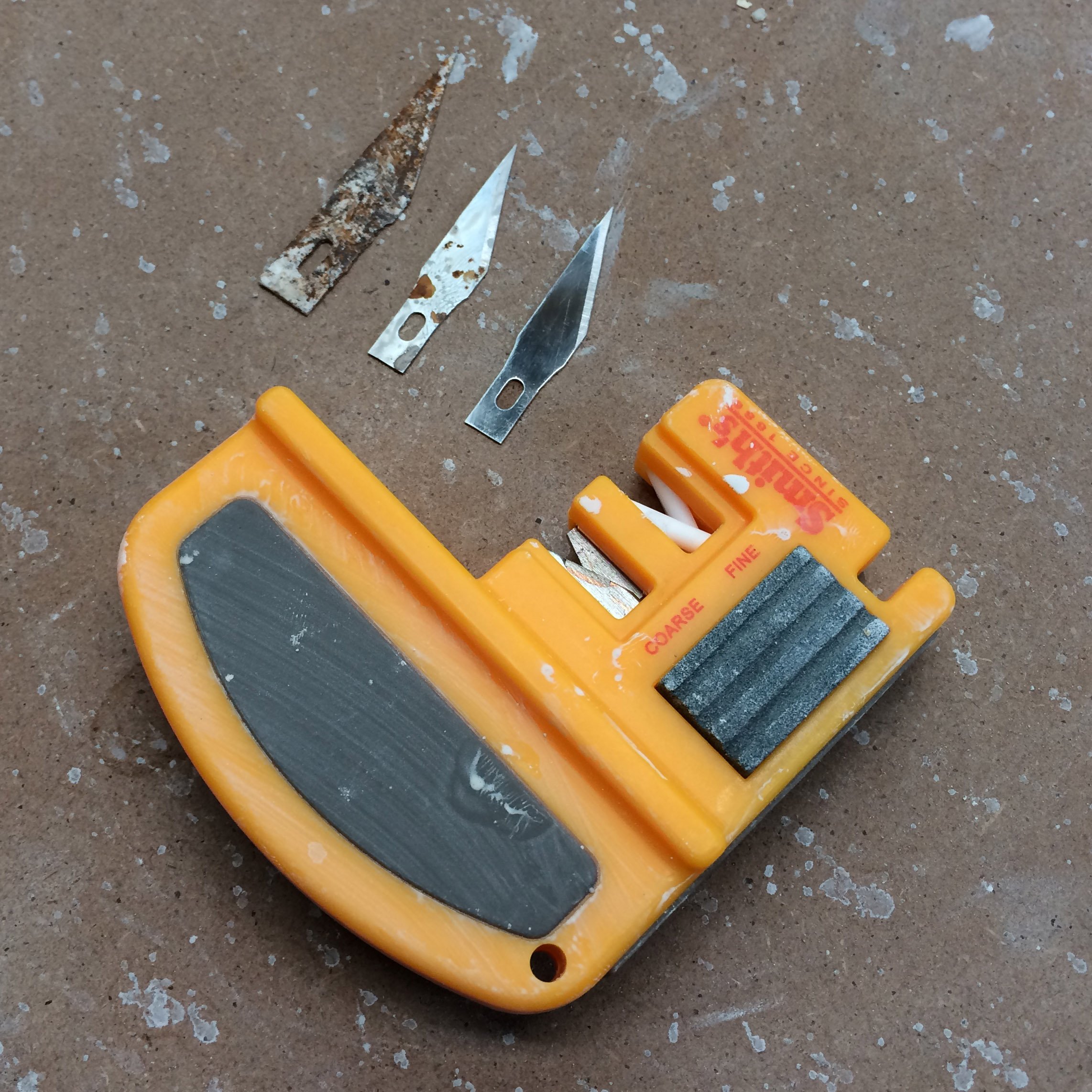Blades
I use X-acto blades all the time, some modified for specific tasks like carving porcelain or scraping glaze off of feet.
I'm not sure if it's all part of a vast X-acto conspiracy, but it seems that a lot of people don't know that these blades can be easily & quickly sharpened? While there are a number of sharpening methods (even just using bare fired porcelain) that will work, it can be tedious to get the sharpening angle right. The most convenient method I have found is an angled sharpener (pictured). Just a few quick passes through the ceramic sharpener gets the blades useable again. It's faster for me to sharpen the blade than switch out a dull blade for a new one. (Unfortunately my sharpener is approximately 45% degree sharpening angle (> 20 degrees per side), it might be better to have a narrower-angled sharpener.)
Also note that not all X-acto blades are stainless steel. You don't want rusty blades all over your studio or in your reclaim. A 10 or 100-pack of stainless steel #11 blades might last you a lifetime.
An alternative to X-acto blades are stainless steel surgical blades. They come in a wide variety of shapes and sixes perfect for a number of jobs. I usually use the blades without a handle. They come in ten-packs and last a really long time if you sharpen them.


